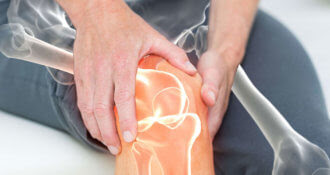How Physical Therapy Can Treat Sciatica Caused by Low Back Pain
Back torment is the second most normal side effect related justification active recuperation in the United States. Up to 84% of grown-ups have low back torment eventually in their lives, with sciatica influencing up to 40% of those with low back torment. The drawn-out result of low back torment is for the most part ideal, however steady manifestations influence a great many people. Sciatica represents roughly 5% of individuals with back torment who go on handicap, and for up to 75% of the expenses related with low back torment. Noninvasive intercession, for example, active recuperation is a significant instrument that can assume a critical part in decreasing medical care costs.
What is Sciatica?
The term sciatica portrays the indications of leg torment and potentially shivering, deadness, or shortcoming that begins in the lower back and travel through the butt cheek and down the enormous sciatic nerve toward the rear of the leg.
Sciatica is anything but a clinical analysis it is a side effect of a hidden ailment, for example, a lumbar herniated circle, degenerative plate sickness, or spinal stenosis. Sciatica is regularly portrayed by one or a mix of the accompanying side effects:
Steady agony in just one side of the butt cheek or leg (seldom can happen in the two legs)
The torment that is more regrettable when sitting
Leg torment that is frequently portrayed as copying, shivering or burning (versus a dull throb)
Shortcoming, deadness, or trouble moving the leg or foot
A sharp aggravation that might make it hard to stand up or to walk
The most effective method to treat Sciatica Symptoms brought about by Low Back Pain
Ultrasound: Ultrasound is frequently suggested prior to extending the piriformis muscle. Ultrasound is a type of profound warming wherein sound waves are applied to the skin and infiltrate into the delicate tissues. Ultrasound is particularly helpful in easing intense scenes of agony and may upgrade tissue recuperating.
TENS: TENS, or transcutaneous electrical nerve incitement, is a back treatment methodology that utilizes low voltage electric flow to alleviate torment. TENS is viable for treatment since it causes the neighborhood arrival of synapses, for example, serotonin to hinder the aggravation signals in the cerebrum.
Iontophoresis: Iontophoresis gives a method for overseeing medicine transdermally utilizing a low, direct electrical flow to drive it to the elaborate tissues of the low back. Every now and again, it is utilized to regulate calming meds to neighborhood issues. An auxiliary advantage for iontophoresis is simply the electrical flow that can promptly lessen side effects by hindering agony receptors.
Foothold table: Lumbar footing utilizing a foothold table works under the hypothesis that detachment of the lumbar vertebrae will diminish impingement of the spinal nerves just as decline pressure between the circles.
Low-Level Laser Therapy: Low-Level Laser Therapy soothes muscle strain, fits, aggravation, liquid maintenance, throbs, firmness, and torment. Different advantages of LLLT incorporate further developed dissemination (blood and lymph), general adaptability, the scope of movement, and expanded tissue versatility (ex: scar tissue). In an investigation distributed in The Australian Journal of Physiotherapy, results showed that Low-Level Laser Therapy joined with practice radically decreased torment and expanded the lumbar scope of movement in patients grumbling of extreme low back torment.
Low back torment is a costly channel on medical care and people. At the point when left untreated low back torment can proceed to bring about additional issues, like sciatica, subsequently expanding its unfavorable impact. Active recuperation is a period and savvy approach to battle the impacts of sciatica and low back torment, assisting patients with getting the undertaking of carrying on with their lives torment-free.



Comments
Post a Comment